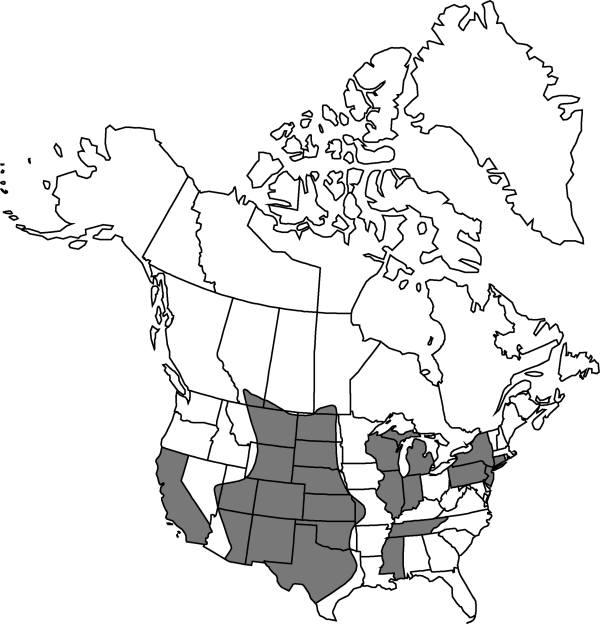Difference between revisions of "Mirabilis linearis"
Annuaire Conserv. Jard. Bot. Gen ève 5: 186. 1901.
FNA>Volume Importer |
FNA>Volume Importer |
||
| Line 7: | Line 7: | ||
|year=1901 | |year=1901 | ||
}} | }} | ||
| − | |basionyms={{Treatment/ID/ | + | |basionyms={{Treatment/ID/Basionym |
|name=Allionia linearis | |name=Allionia linearis | ||
|authority=Pursh | |authority=Pursh | ||
| + | |publication_title=Fl. Amer. Sept. | ||
| + | |publication_place=2: 728. 1814 | ||
}} | }} | ||
|synonyms={{Treatment/ID/Synonym | |synonyms={{Treatment/ID/Synonym | ||
| Line 72: | Line 74: | ||
|publication year=1901 | |publication year=1901 | ||
|special status= | |special status= | ||
| − | |source xml=https://jpend@bitbucket.org/aafc-mbb/fna-data-curation.git/src/ | + | |source xml=https://jpend@bitbucket.org/aafc-mbb/fna-data-curation.git/src/f6b125a955440c0872999024f038d74684f65921/coarse_grained_fna_xml/V4/V4_100.xml |
|genus=Mirabilis | |genus=Mirabilis | ||
|section=Mirabilis sect. Oxybaphus | |section=Mirabilis sect. Oxybaphus | ||
Revision as of 19:59, 24 September 2019
Stems decumbent, ascending, or erect, sparsely leafy with few stems to very leafy and bushy branched, leafy primarily in proximal 1/5 to throughout, 1–1.3 dm, basally minutely puberulent in 2 lines, sparsely or densely spreading-hirsute, or rarely glabrate or glabrous; distally minutely puberulent in 2 lines, sparsely or densely spreading-hirsute, or rarely glabrate or glabrous, usually glandular-puberulent or pubescent in inflorescence. Leaves strongly ascending to spreading at 5–80°; petiole 0–1.5 cm; blade green to blue-gray and glaucous, linear to linear-lanceolate, rarely lanceolate, 3–11.5 × 0.1–1(–1.8) cm, thin to fleshy, thick, and succulent, base long attenuate or narrowly acute, apex acutely tapered to rounded, surfaces glabrous, glandular-pubescent, or hirsute. Inflorescences axillary and terminal, when axillary, consisting of single involucres or short branches, when terminal with ± well-defined central axis and shorter side branches, or narrowly to widely forked without main axis; peduncle 3–10 mm, usually spreading glandular-puberulent or pilose, crosswalls of hairs pale or dark; involucres pale green, sometimes tinged with purple, narrowly to widely bell-shaped, 3–6 mm in flower, 4–10(–15) mm in fruit, spreading viscid-pubescent to hirsute, 40–70% connate, lobes ovate. Flowers 3 per involucre; perianth white to purple-pink, 0.7–1.1 cm. Fruits olive brown or dark olive brown, narrowly obovate and tapering at both ends to obovoid, 3.1–5.5 mm, pubescent with spreading crinkled hairs in tufts or ± evenly distributed, hairs 0.1–0.5 mm; ribs sometimes slightly paler, slightly elevated above surface (usually less than 0.5 times as wide as high), low rounded to round-angled, 0.5–1 times width of sulci, 0.3–1 times as wide as high, smooth throughout or sometimes rugose on sides, occasionally interrupted and tuberculate near apex; sulci with small or rarely large tubercles, or low and inconspicuous or occasionally high and prominently cross-rugose.
Distribution

North America, n Mexico.
Discussion
Varieties 3 (3 in the flora).
Selected References
None.
Lower Taxa
Key
| 1 | Stems hirsute, at least basally | Mirabilis linearis var. subhispida |
| 1 | Stems minutely puberulent, glabrate, or glabrous basally | > 2 |
| 2 | Leaf blades linear, grayish or bluish green; perianth white to deep rose-pink | Mirabilis linearis var. linearis |
| 2 | Leaf blades linear-lanceolate to lanceolate, green; perianth pink to deep purple-pink | Mirabilis linearis var. decipiens |